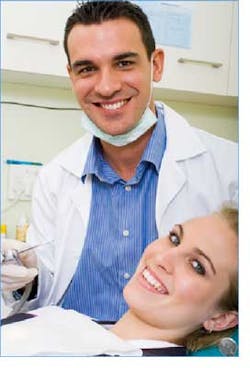Why won't my patient ... Getting even your toughest patients to better oral health
RELATED |Helping your most challenging patients improve their oral hygiene
This situation is not only frustrating but puzzling for many practitioners. After all, you showed the patient problem, provided the necessary education, which included a solution for improvement. It might be easy to write it off as the apathy of an adolescent, but in reality this occurs with adults too.
When this happens, we generally believe the problem lies with the patient. We often think, maybe they didn’t understand, so we drive the point home again; sometimes again and again. But nothing changes.
RELATED |Motivating teens to better oral care through the use of dental technology
What we generally overlook in this situation is changing our tactics. Chip and Dan Heath, in their book, Switch: How To Change Things When Change Is Hard identify three core aspects that are needed to drive change.
1.The rationale side, identified as the Rider. The rider is the thinker, and the one we appeal to when we provide patient education. The mistake we make at this juncture is thinking that information = motivation. Generally it does not. Instead, Chip and Dan Heath point out that information provides direction. When it comes to direction, we need to be as clear as possible. For example, does the patient know what “puffy tissue” is? Or the impact of white spots? When we provide patient education, we need to take a moment to check in with the patient (and Mom) to make sure the message is understood. Doing this a few times should provide some clarity on what type of language is most effective. It may be different depending upon the age and/or gender of your patient. Once you know what works best for which groups, you can adapt to each for continued success.
2.The emotional side, identified as the Elephant. The Elephant provides the emotional side, and is therefore the path to motivation. Knowing is not enough; most people need to feel that need for change before they will act on it. A word of caution; fear is not the best motivator, but often the emotion of first resort for many of us. How can we help our patients find the positive feeling that promotes change? Perhaps it’s with before-and-after photos of other orthodontic patients. Help your patients picture themselves with that great smile, and help them identify happiness and success with the smile. One thing you might consider is asking former patients to send you pictures of themselves participating in sports, music, plays, or dressed up for events like Homecoming or Prom. These are the things you want your young patient to link with having a great orthodontic outcome.
3. Tweaking the environment; identified as shaping the path. If you are recommending products that are known to be easy and effective alternatives to using a floss threader, then you are already making the path easier. The Heath brothers note there is great value in finding ways to make the right behaviors easier. If you are still insisting that your patients thread through the brackets (an admittedly tedious process), then it is time to explore other products that make this process easier. Look for products that have been compared to string floss to gauge effectiveness.
We can’t make our patients change; but we can change how we drive change and motivation with our patients. It may seem awkward at first, but with some direction, you will find your emotional side stimulated and the path easier.

